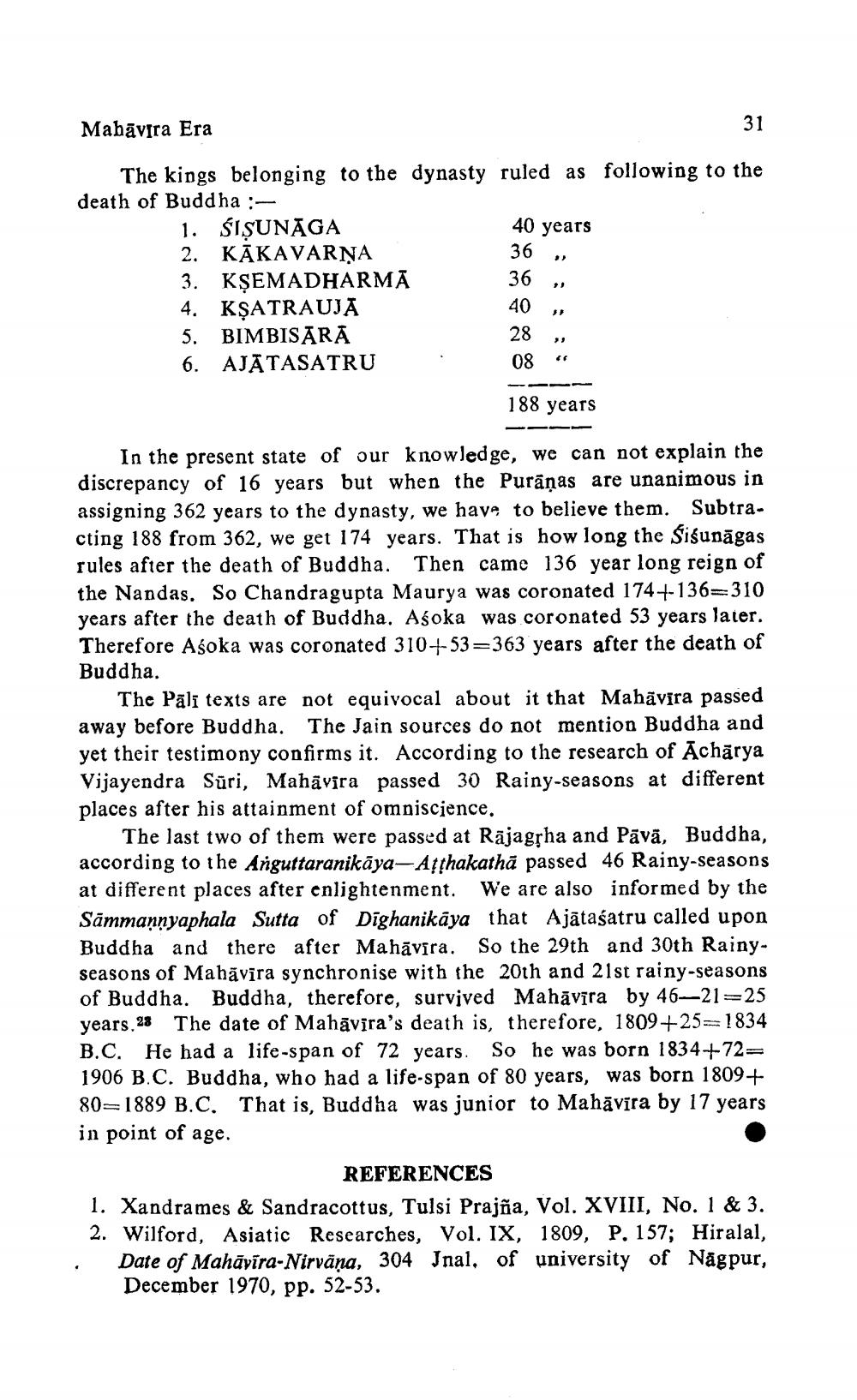________________
Mahavira Era
31
The kings belonging to the dynasty ruled as following to the death of Buddha :
1. SISUNAGA
2. KAKAVARNA
3. KṢEMADHARMA
4. KṢATRAUJĀ
5. BIMBISARĀ AJATASATRU
6.
40 years
36
36
40
28
08
188 years
"
""
"
33
In the present state of our knowledge, we can not explain the discrepancy of 16 years but when the Purāņas are unanimous in assigning 362 years to the dynasty, we have to believe them. Subtracting 188 from 362, we get 174 years. That is how long the Siśunāgas rules after the death of Buddha. Then came 136 year long reign of the Nandas. So Chandragupta Maurya was coronated 174+-136=310 years after the death of Buddha. Aśoka was coronated 53 years later. Therefore Aśoka was coronated 310+53-363 years after the death of Buddha.
The Pali texts are not equivocal about it that Mahavira passed away before Buddha. The Jain sources do not mention Buddha and yet their testimony confirms it. According to the research of Acharya Vijayendra Suri, Mahavira passed 30 Rainy-seasons at different places after his attainment of omniscience.
The last two of them were passed at Rājagṛha and Pāvā, Buddha, according to the Anguttaranikaya-Aṭṭhakatha passed 46 Rainy-seasons at different places after enlightenment. We are also informed by the Sammannyaphala Sutta of Dighanikaya that Ajataśatru called upon Buddha and there after Mahāvīra. So the 29th and 30th Rainyseasons of Mahāvīra synchronise with the 20th and 21st rainy-seasons of Buddha. Buddha, therefore, survived Mahāvīra by 46-21-25 years. 28 The date of Mahavira's death is, therefore, 1809+25=1834 B.C. He had a life-span of 72 years. So he was born 1834+72= 1906 B.C. Buddha, who had a life-span of 80 years, was born 1809+ 80-1889 B.C. That is, Buddha was junior to Mahavira by 17 years in point of age.
REFERENCES
1. Xandrames & Sandracottus, Tulsi Prajña, Vol. XVIII, No. 1 & 3. 2. Wilford, Asiatic Researches, Vol. IX, 1809, P. 157; Hiralal, Date of Mahavira-Nirvāņa, 304 Jnal, of university of Nagpur, December 1970, pp. 52-53.




